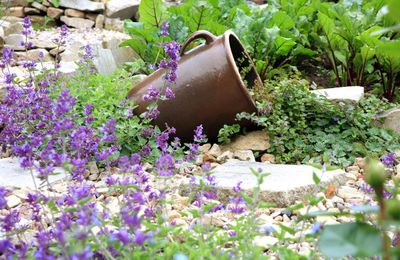Catnip Companion Plants and Insects
If you have ever watched a feline near a catnip plant, it is obvious the attraction is very strong. Not only is catnip useful in kitty-friendly gardens, but it also combats several common insect pests. Collard greens, for example, are one of many companions for catnip. The oils in the herb repel flea beetles and keep the greens free of their feeding damage. There are many other plants to grow with catnip that benefit from the pungent scent. The potent oils in catnip are unpleasant to many insects, such as:
Aphids Ants Cabbage loopers Colorado potato beetles Japanese beetles Flea beetles Cockroaches Weevils Squash bugs
That is quite a list for an easy-to-grow herb. Using catnip as a companion in the vegetable garden can help protect the plants from insect damage without having to resort to dangerous chemicals. Some plants to grow with catnip include:
Collards Beets Pumpkin Squash Broccoli Cauliflower Potatoes
The powerful scent of the herb also seems to repel mice and voles, two other pests of the veggie garden.
Using Catnip Companion Plants
Catnip can get quite invasive, spreading rapidly through a bed. To avoid this, you can plant the herb in a container and then bury it near catnip companion plants. Obviously, the herb may attract cats to your garden, but the flowers also attract honeybees. If you don’t want cats right in the garden, use catnip as a border. The cats will be so distracted by the delicious scent of the plant they may avoid the soft soil around your plants and do their business elsewhere. As an added bonus, you can enjoy a cat’s antics as it frolics among the scented leaves and blooms. Plenty of photo opportunities will ensue! Catnip can be started from divisions, seed, or cuttings. It grows rapidly and has few disease and pest issues itself. When planting catnip as pest repellent, situate the plant near those that need protection, in full sun and well-draining soil. Catnip can get leggy, so pinch young plants early to develop a denser, bushy form. To use the plant in the home, cut stems and hang them upside down outside in a dry location. Once the herb leaves are dried, pull them off the stems. Crush leaves and sprinkle them around doors and window sills, as well as around the house where tiny insect invaders can gain entrance. The smell lasts for up to a week and will help prevent many insect pests from bugging your home.
